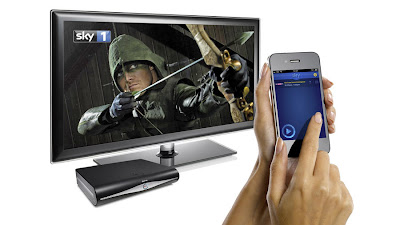The latest major update for Apple's mobile devices, the
iPad,
iPhone and
iPod touch, was mostly hit, but with a Maps-shaped miss.
Lots of people were rightly angry about
Apple ditching Google data, but beyond that mis-step there were things to like: a
more useful Siri (App launching plus the recognition that a world exists outside
of the USA), shared Photo Streams, handy Phone app controls such as 'send to
voicemail', and major improvements to Mail, Safari, accessibility and the Camera
app.
But regardless of what Apple achieves, it's never really enough. As soon as
you've sat there playing with the latest iOS, ideas pop into your head regarding
what you'd like to see next. This article explores a dozen of the features we're
clamouring to see in iOS 7. (And by 'clamouring', we of course mean 'asking
really nicely'. C'mon, Mr Cook - pretty please?)
Pretty much everyone we know with an Apple device has a folder entitled
'Apple'. This isn't filled with must-have apps from the geniuses at Cupertino,
but all the junk Apple installs that you can't get rid off. To be fair, what
each individual considers junk is different, and these apps—Compass, Stocks,
Voice Memos, Passbook, and so on—have their fans; but is it too much to ask for
a switch in Settings that will hide those we don't use?
Change for change's sake is rarely a good thing. Recognition is key to
satisfying experiences with technology. That's why we're not yelling at Apple to
change how iOS home screens work. What we would like to see is improvements to
app management: more screens; by default saving app data on delete; and an
alphabetical list of installed apps, perhaps accessible from Spotlight.
We're pretty certain this request would be met with wide-eyes from Apple CEO
Tim Cook, swiftly followed by a full twenty minutes of belly laughing, but we
want the ability to use non-default apps for important things like email and
calendaring. Apple's own apps would remain the defaults, but you should also be
able to pick your own in Settings.
It's extremely unlikely that Apple's ever going to enable multiple user
accounts on iOS devices—they are, after all, designed as extremely personal
computers. What is perhaps more realistic is some kind of guest account you
could switch to when handing your device over to someone for a short while;
something similar already exists on the Mac in OS X.
OS X is blessed with dozens of high-quality voices that witter away to you in
various dulcet tones. By contrast, Siri is Siri. In the US, you get a slightly
robotic woman; in the UK, Siri's that bloke who did
The Weakest Link
for a decade. It'd be great if you could choose the voice your device uses to
speak. (Possible exception: Yoda voice.)
Apps and games might be cheap, but that doesn't figure cheapskates into the
equation. Too often, people are unwilling to risk 69p on the latest release,
forcing devs into irritating freemium models or making them clutter up the App
Store with 'lite' versions of their output. Apple should just allow demos: 24
hours from first launch and then you buy or the app won't run. Boom.
Fed up of getting woken up in the middle of the night by the marketing
efforts of [redacted, but quite possibly a well-known mobile network] or Game
Center fanfares? Do Not Disturb is a great feature that enables you to time when
your phone will quit bugging you. But you can define only a single schedule, and
we want to see alternative options for weekends.
Locking is a great thing on iOS devices, making it at least a little harder
for some scallywag to get at your data if they pinch your shiny Apple joy. But
it could be more intelligent, locking on a location-aware basis, and not when
you're, say, happily sitting at home on the sofa.
There's something to be said for Apple's minimalism regarding the iOS lock
screen, and it's mostly that it's too minimal. We're not sure we want to see
Android-style widgets sprayed everywhere, but a little more functionality
wouldn't go amiss. For example, artwork from a currently playing song is
displayed on the lock screen, but there are no controls for pausing or skipping
to the next track, until you double-press Home, which isn't hugely discoverable.
And beyond notifications, nothing else shows up there at all.
In recent years, Apple's made great leaps away from iTunes, and you can
technically get away with never using the monstrous jukebox. However, there's
still no way to easily get your existing music collection nor your photographs
on to your device, and there should be. (Alas, with Apple wanting to push iTunes
Match and the iTunes Store, there almost certainly never will be for the first
of those.)
We're hesitant at arguing Apple's home screen icons should be more like
Windows 8 tiles, but there's something to be said for dynamic updates when such
things work well. With iOS, you get update badges and a live calendar. It'd be
nice at the least if Apple made its own Clock and Weather icons dynamic.
On a device, you now often see iOS-style banners on websites that when tapped
take you right to the equivalent App Store app. But if you're browsing
elsewhere, you have to email yourself a reminder and then install later. How
good would it be if you were surfing on your PC, saw a great app and could
install it across your devices without going near them, nor even to
iTunes?









